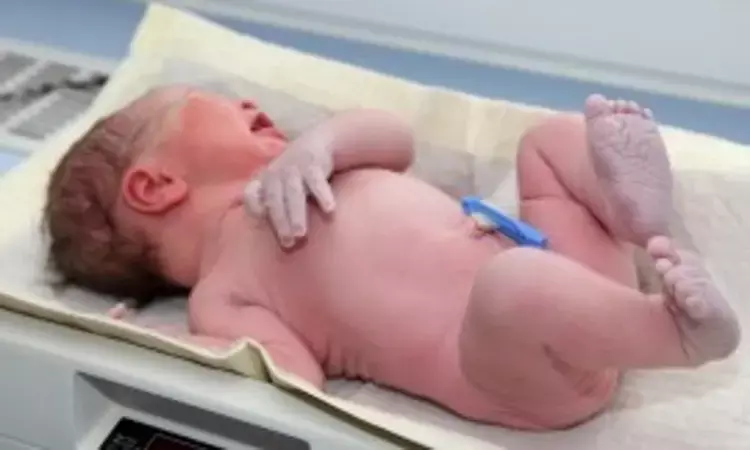- Home
- Medical news & Guidelines
- Anesthesiology
- Cardiology and CTVS
- Critical Care
- Dentistry
- Dermatology
- Diabetes and Endocrinology
- ENT
- Gastroenterology
- Medicine
- Nephrology
- Neurology
- Obstretics-Gynaecology
- Oncology
- Ophthalmology
- Orthopaedics
- Pediatrics-Neonatology
- Psychiatry
- Pulmonology
- Radiology
- Surgery
- Urology
- Laboratory Medicine
- Diet
- Nursing
- Paramedical
- Physiotherapy
- Health news
- Fact Check
- Bone Health Fact Check
- Brain Health Fact Check
- Cancer Related Fact Check
- Child Care Fact Check
- Dental and oral health fact check
- Diabetes and metabolic health fact check
- Diet and Nutrition Fact Check
- Eye and ENT Care Fact Check
- Fitness fact check
- Gut health fact check
- Heart health fact check
- Kidney health fact check
- Medical education fact check
- Men's health fact check
- Respiratory fact check
- Skin and hair care fact check
- Vaccine and Immunization fact check
- Women's health fact check
- AYUSH
- State News
- Andaman and Nicobar Islands
- Andhra Pradesh
- Arunachal Pradesh
- Assam
- Bihar
- Chandigarh
- Chattisgarh
- Dadra and Nagar Haveli
- Daman and Diu
- Delhi
- Goa
- Gujarat
- Haryana
- Himachal Pradesh
- Jammu & Kashmir
- Jharkhand
- Karnataka
- Kerala
- Ladakh
- Lakshadweep
- Madhya Pradesh
- Maharashtra
- Manipur
- Meghalaya
- Mizoram
- Nagaland
- Odisha
- Puducherry
- Punjab
- Rajasthan
- Sikkim
- Tamil Nadu
- Telangana
- Tripura
- Uttar Pradesh
- Uttrakhand
- West Bengal
- Medical Education
- Industry
A Novel Mutation Causing Primary Hypoaldosteronism In a Term Neonate: Case report

A team of neonatologists from Fernandez Hospital,Hyderabad reported an interesting case of primary hypoaldosteronism as a consequence of rare gene deletion.
A nine day old term neonate, delivered at 39 weeks gestation presented to out-patient department with jaundice and excessive weight loss(9.7%). On detailed examination child was hemodynamically stable and there were no physical anomalies or dysmorphism. Though jaundice disappeared within 36 hours after initiation of phototherapy, child continued to lose weight by day 11. Obstretic history included one abortion in 1st trimester and a healthy living male child. Mother had deranged blood sugar at 36 weeks gestations and late onset polyhydromnios at 38 weeks. It was normal vaginal delivery with birth weight of 3.82kg.Child was discharged on day 4 of life with established brestfeeding and mother had good lactation at home, also child was diuresing well. As baby had continued weight loss, child was admitted for evaluation.
Investigations revealed hyponatremia(124mEq/L) , hyperkalemia(6.9mEq/L) and normal blood cell counts,CRP,blood gas and urine analysis. Urine culture revealed growth of Escherichia coli. Genitalia, skin pigmentation, blood pressure, urine output and blood sugar were normal. The possibilities considered were salt wasting congenital adrenal hyperplasia, adrenal hypoplasia/hemorrhage, and type 4 renal tubular acidosis. Baby was started on maintenance IV fluids, sodium correction and anti-hyperkalemic measures. With continued treatment baby had worsening hyponatremia,hyperkalemia and new onset normal anion gap metabolic acidosis and natriuesis mimicking type IV renal tubular acidosis.
On extensive evaluation,ultrasound of adrenals, expanded newborn screening, 17-hydroxy progesterone, testosterone, dehydroepiandrosterone and cortisol levels were normal, and an appropriate response was noted with ACTH stimulation test, ruling out the possibility of congenital adrenal hyperplasia (CAH) and other structural adrenal pathologies. Decreased aldosterone activity was suggested by low transtubular potassium gradient and an elevated urinary pH. Aldosterone level was low (4.05 ng/dL; normal: 5-90 ng/dL) and plasma renin activity was high (>120 ng/mL/h; normal range: 2-35 ng/mL/h), indicating a possibility of primary hypoaldosteronism.
Whole exome sequencing revealed a novel heterozygous contiguous deletion of 3 kb involving exons 5-9 of CYP11B2 gene at chromosome 8 that results in corticosterone methyl oxidase type I and II deficiency, conclusive of aldosterone synthase deficiency (ASD) (primary hypoaldosteronism).While most cmmon mutations include missense or non-sense, a deletion was noted in this case.The child was continued on sodium and bicarbonate supplements, and fludrocortisone was initiated. Following this, the child started gaining weight, with normalization of electrolytes and was discharged on day 28 of life.
Parents were counseled regarding risk of recurrence and the need for antenatal diagnosis in future. At last follow-up, at 3½ months of age, child was on fludrocortisone and sodium supplements, with good weight gain (5.4 kg), and normal serum electrolytes (Na-131 mEq/L and K-5.1 mEq/L).
Authors conclude-" Diagnostic approach to excess weight with abnormal electrolytes in a neonate includes tests that primarily rule out congenital adrenal hyperplasia due to 21-hydroxylase deficiency;while X-linked adrenal hypoplasia congenita, ASD and aldosterone resistance pseudohypoaldosteronism, PHA) are the other less common causes."
Source:IAP journal
Dr Kamal Kant Kohli-MBBS, DTCD- a chest specialist with more than 30 years of practice and a flair for writing clinical articles, Dr Kamal Kant Kohli joined Medical Dialogues as a Chief Editor of Medical News. Besides writing articles, as an editor, he proofreads and verifies all the medical content published on Medical Dialogues including those coming from journals, studies,medical conferences,guidelines etc. Email: drkohli@medicaldialogues.in. Contact no. 011-43720751


